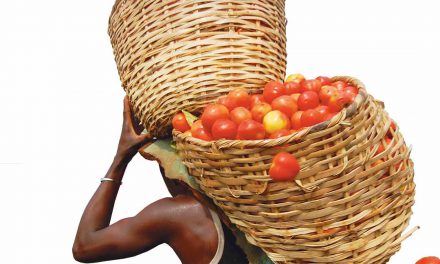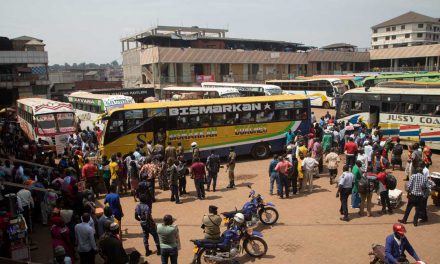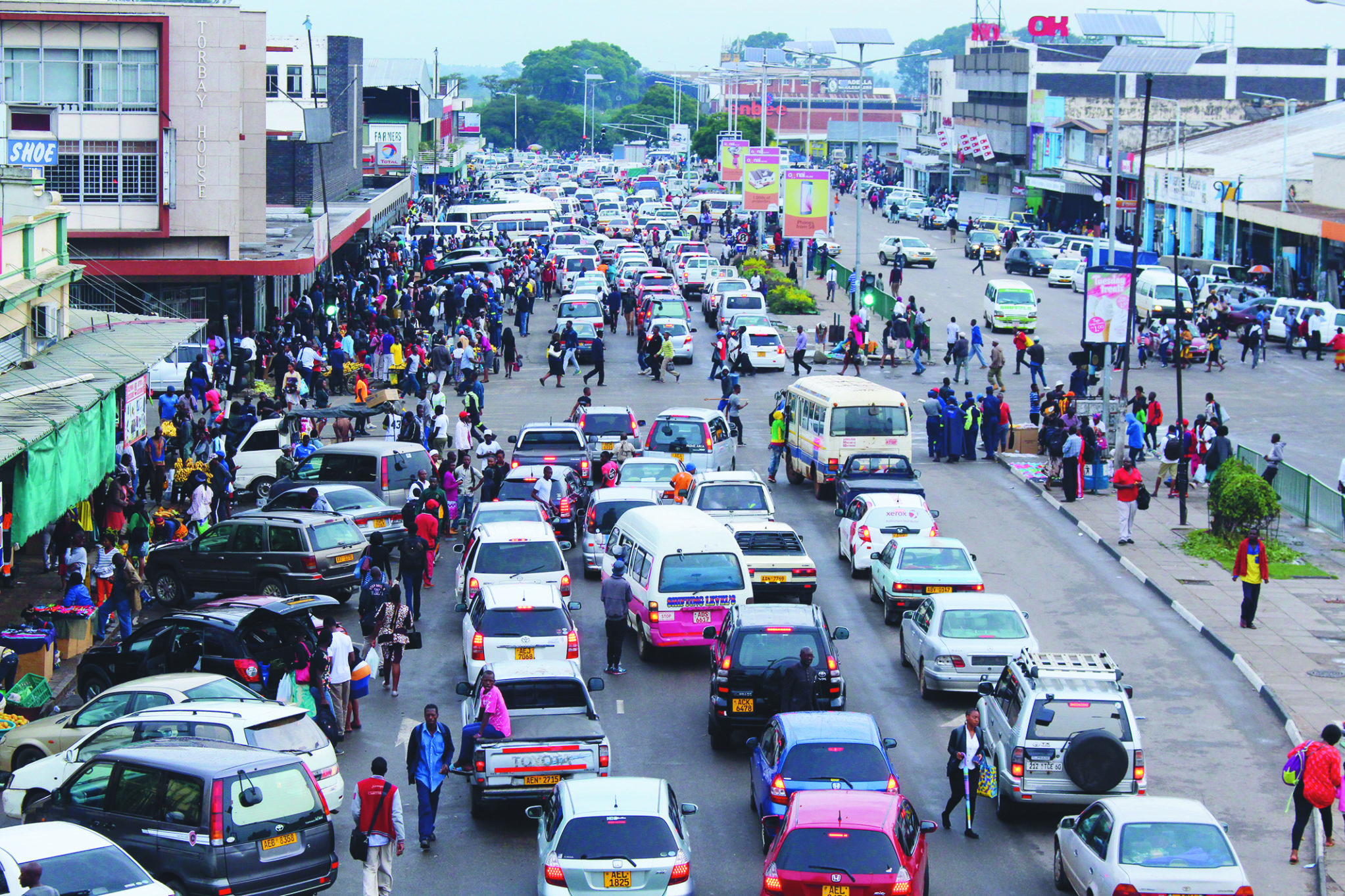
CapeTown viewed from Atlantis township. Photo: iStock
The African middle class isn’t strong enough to drive the economic development required to cope with the influx of new urban dwellers
Obed Ndhlovu laughed a hearty chuckle that was tinged with bemusement. A rat had darted across his neat three by three-metre shack, startling his visitor on a Sunday morning. Nearby, some men were gathered to drink, while others contemplated church in Diepsloot, a slum of about 350,000 people at the northern edge of Johannesburg.
“Always they are promising,” Ndhlovu said, thinking about the 15 years he’s been waiting for government housing. “But they keep improving other areas when those already have power and paved roads.”
His door is marked A842 in red paint, designating his place in line for new government housing, but the number has taken on a mystical sense for a faraway process that might never happen. Ndhlovu, 40, works as a security guard on a housing estate. He remits most of his R4,900 ($411) a month salary to his wife and two children back in Limpopo, 344 km (214 miles) north-east of his shack in South Africa’s largest city.
Yet Ndhlovu is better off than many rural-to-urban migrants; he has a job in an economy with at least 25% unemployment – although some estimates put it as high as around 40%. He aspires to be part of an expanding African middle class that the African Development Bank defines as living on $12 to $20 a day.
Johannesburg is part of a mega-city of some 12 million people in Gauteng province in South Africa, putting it on the same level as the Democratic Republic of Congo (DRC) and Republic of Congo’s cross-border megalopolis of Kinshasa-Brazzaville, according to the UN. The city is just more than half of the size of the continent’s behemoths, Cairo and Lagos, which host about 21 million people each.
Of the world’s 100 fastest growing cities, more than a quarter of them are in Africa, according to the UN. Africa’s city residents will triple to 1.2 billion by 2050, when 58% of Africans will live in cities, the UN has reported.
“The ability of African cities to cope with these numbers is questionable, since they generally lack the institutional and infrastructural capacity to absorb the additional urban dwellers,” the UN Human Settlements Programme, known as UN Habitat, wrote in a report in 2014. “The majority of these new urban dwellers will reside in slums and/or informal settlements.’’
Also in 2014, Standard Bank, Africa’s largest lender by assets, forecast the continent’s middle class would increase from 15 million households to 40 million households by 2030, even as broader hopes of a “Rising Africa” helped exaggerate expectations. But now, almost four years later, one of Africa’s leading academics on cities says that hopes of an African economic resurgence based on middle-class consumption are overblown.
“The [African] middle class is really small and its growth is fairly limited,” Edgar Pieterse, director of the African Centre for Cities at the University of Cape Town, said in an interview. “We have a massive challenge if we’re relying on an urban incorporation strategy that’s linked to the consumption of the middle class.”
But the African middle class isn’t strong enough to drive the economic development and tax base expansion required to cope with poverty. It continues to grow, but the continent’s cities are growing faster. Urban poverty is likely to increase as Africa’s cities expand. Meanwhile, the continent’s economies are transitioning from primary resource exploitation to service sectors without an intermediate industrialisation that creates jobs. “That trap represents the absence of decent employment for this burgeoning youthful demographic in most African countries,” Pieterse told Africa in Fact.
The lack of jobs he pointed to is mirrored in the paucity of new housing for lower-income earners in Kenya’s capital, Nairobi, where all construction seems to be targeting the top 2% of higher-income residents, according to Remco Rolvink, a co-founder of the Amsterdam-based Dutch Alliance for Sustainable Urban Development in Africa. Yet the link here, as elsewhere in Africa, between scarce employment and poor low-income housing provision itself offers a partial solution.
Employment opportunities should be incorporated into development projects, he argues, and this could be done by creating links between rural areas and the urban periphery. Sustainable jobs on the periphery could be a stepping stone to the urban centre, or help to limit the influx to crowded city cores. “It starts with people, not with buildings,” Rolvink told Africa in Fact. With more jobs in intensive agriculture, processing, storage, packaging and delivery activities would also be needed – and would stay in the region.
Indeed, the numbers tell us that it’s the continent’s secondary cities, and the countries which are least urbanised, that are growing the fastest. “The bulk of the urban population increases are now being absorbed by Africa’s secondary and smaller cities,” the UN reported in its State of African Cities 2014. Rwanda, Kenya and Uganda, where less than 30% of the population lives in cities, are seeing urban growth rates of 4.68% a year, versus 2.23% annually in countries with more than 60% urbanisation such as South Africa, Algeria and Gabon, according to the 2017 UN Economic Report on Africa.
But Africa’s cities will not continue to grow indefinitely, says Mathias Spaliviero, a senior officer for Africa at UN Habitat in Nairobi. Major cities will simply be unable to cope, rendering living conditions untenable as more and more people flock to them. Nor are the continent’s secondary cities equipped with the appropriate planning, legal and welfare resources to deal with the rapid influx of rural migrants headed their way. Meanwhile, many would-be migrants might find that they can’t cope with the high cost of food and transport in megacities.
“I’m hearing all the time from cities ‘We need more money’, but that is just not a solution,’’ Spaliviero said. “You need systems in place, a planning infrastructure. You need people who know what they have to do and how it’s done. You need accountability, a financial system that works and is reliable. You need less corruption. Even if I give you $1 billion, if you don’t have (such a) system in place, you’re not going to be able to spend it in the right manner to better develop the cities in your country.”
It’s a view shared by Jo da Silva, director of international development at London-based Arup Group Ltd. Da Silva is an engineer with one hand on the shovel and the other on the design of the billion-dollar developments that get the green light in many African countries. “Projects are being done very fast and there is very limited capacity in Africa to cope with the pace of urbanisation that’s happening,’’ she said by phone as she was on the way to Heathrow Airport.
“Projects are going from planning to execution almost missing the design phase, or fast-forwarding the design phase,” she added. The result is that lessons learned from mega-projects since Americans began building highways through cities in the 1950s have not been learned in Africa, she said.
Other concerns include making city plans workable at local levels and consulting with citizens about service provision in areas such as water supply and waste management. Such an inclusive approach, she suggested, would result in a better fit of projects to needs, as well as being more equitable.
Some cities, such as Kigali in Rwanda, have taken an approach along these lines, according to Pieterse. The city is investing in developments that have a catalytic effect on living standards, such as public transport and free access to information and communication technology – wifi in particular. “They’ve invested in those things even though obviously it’s still a very poor country if you look at gross domestic product per capita,” he said.
His other top pick for an African city that is grappling successfully with the demands of expansion and poverty is Johannesburg. The city’s massive infrastructure and strong administrative capacity form a backbone for national government policies that enable direct transfers of funds and priority investments in areas such as public transport and housing, Pieterse said. Johannesburg, he added, also benefits from a sophisticated set of research and policy communities that assess priorities.
It’s that bureaucratic boost that slum dweller Ndhlovu is counting on as he gazes wistfully at the expanse of vacant land next to Diepsloot and dreams of turning the A842 scrawled on his shack door into a concrete house. “That’s where my future home could be.”
Colin McClelland is a journalist based in Johannesburg with more than 25 years of experience writing for Reuters, Associated Press and Bloomberg, and a background as diverse as covering The Rolling Stones in Canada and Angola's civil war.













